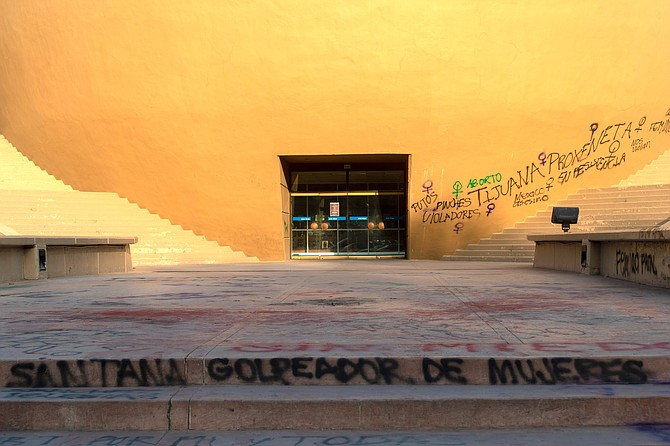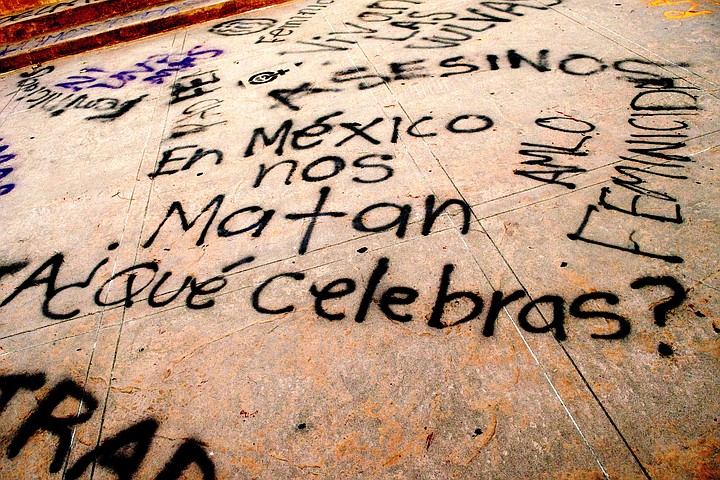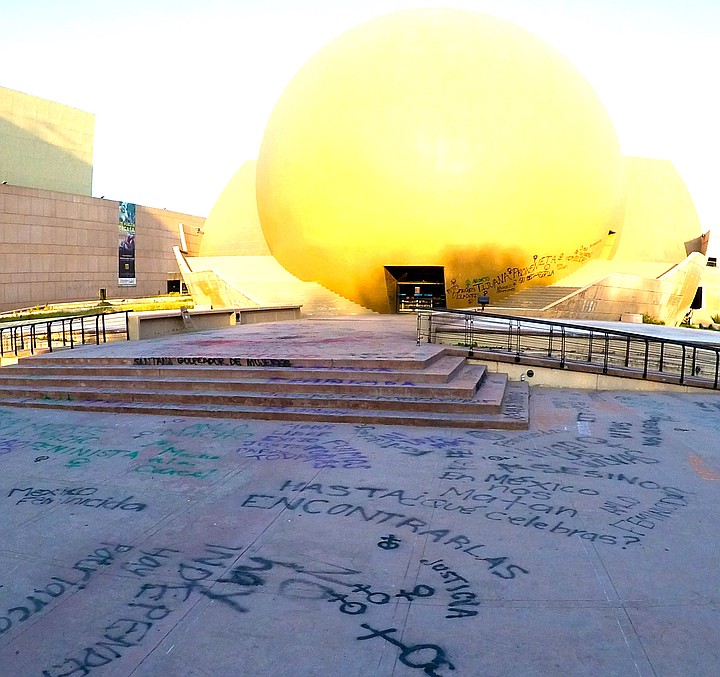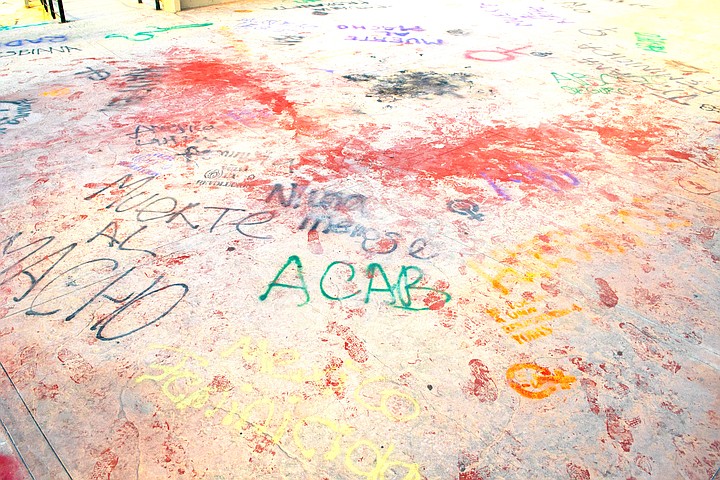 Facebook
Facebook
 X
X
 Instagram
Instagram
 TikTok
TikTok
 Youtube
Youtube

On Tuesday September 15, one day before the anniversary of Mexican Independence or El grito de independencia (the scream for independence), feminists organized La anti-grita in Tijuana. They held a demonstration against the government and the lack of punishment in female murder cases in Baja California.
Though this type of protest is nothing new and this isn’t the first time they painted buildings with spray cans, the event is incomparable. This is because it happened at the Tijuana Cultural Center (CECUT), one of the oldest (opened in 1982) and most iconic structures in the city. It sparked a public debate between those who think “monuments don’t have more value than lives” and those against it who say “this is not the right way to protest.”

One of the feminists engaged in the protest, “Lucia”, said that at first the idea was to do the demonstration at city hall, but the authorities sent police to block the streets around it. “Because of this, at the end, it was decided to move it to the Cultural Center because of its location.”
Last International Women's Day on March 8 another demonstration against male violence took place on the Procuraduria General de la Republica (the federal prosecutor’s office in charge of femicides). But that time the protest didn’t reach the media or make any echo in the public sphere.

“It caused discontent among some people because it happened in a public space with a lot of meaning, what they called a “cultural heritage” zone. But how come when men commit these actions (graffiti) it doesn’t have the same impact as when women do the same in protest?... Because the city is not used to seeing women taking action,” Lucia says.
Phrases like “There’s no independence as long there’s patriarchy,” “We’re being killed in Mexico, what are you celebrating for?” “We all did this,” or “Until we find them” could be seen. The next day the cultural center published a press release declaring its respect the right of the demonstrators to protest… “following the line of respect for the right to protest, CECUT decided to leave the messages displayed in its facilities.”

This building is located on Avenida de los Heroes the road in the Rio area that leads to I-5. “I don’t think they will leave them for long,” Lucia said. Five days later, the paintings were erased or painted over by the cultural center's cleaning personnel.
Along with Ciudad Juarez, Tijuana leads with the highest numbers of women murders; 14 cases were reported between January and July. In this context, Lucia stresses that there is a lack of empathy toward the relatives of the victims. “We don’t need to wait to live through the femicide of someone close to us to have empathy with the women who are exposed to this type of violence.”


On Tuesday September 15, one day before the anniversary of Mexican Independence or El grito de independencia (the scream for independence), feminists organized La anti-grita in Tijuana. They held a demonstration against the government and the lack of punishment in female murder cases in Baja California.
Though this type of protest is nothing new and this isn’t the first time they painted buildings with spray cans, the event is incomparable. This is because it happened at the Tijuana Cultural Center (CECUT), one of the oldest (opened in 1982) and most iconic structures in the city. It sparked a public debate between those who think “monuments don’t have more value than lives” and those against it who say “this is not the right way to protest.”

One of the feminists engaged in the protest, “Lucia”, said that at first the idea was to do the demonstration at city hall, but the authorities sent police to block the streets around it. “Because of this, at the end, it was decided to move it to the Cultural Center because of its location.”
Last International Women's Day on March 8 another demonstration against male violence took place on the Procuraduria General de la Republica (the federal prosecutor’s office in charge of femicides). But that time the protest didn’t reach the media or make any echo in the public sphere.

“It caused discontent among some people because it happened in a public space with a lot of meaning, what they called a “cultural heritage” zone. But how come when men commit these actions (graffiti) it doesn’t have the same impact as when women do the same in protest?... Because the city is not used to seeing women taking action,” Lucia says.
Phrases like “There’s no independence as long there’s patriarchy,” “We’re being killed in Mexico, what are you celebrating for?” “We all did this,” or “Until we find them” could be seen. The next day the cultural center published a press release declaring its respect the right of the demonstrators to protest… “following the line of respect for the right to protest, CECUT decided to leave the messages displayed in its facilities.”

This building is located on Avenida de los Heroes the road in the Rio area that leads to I-5. “I don’t think they will leave them for long,” Lucia said. Five days later, the paintings were erased or painted over by the cultural center's cleaning personnel.
Along with Ciudad Juarez, Tijuana leads with the highest numbers of women murders; 14 cases were reported between January and July. In this context, Lucia stresses that there is a lack of empathy toward the relatives of the victims. “We don’t need to wait to live through the femicide of someone close to us to have empathy with the women who are exposed to this type of violence.”
Comments